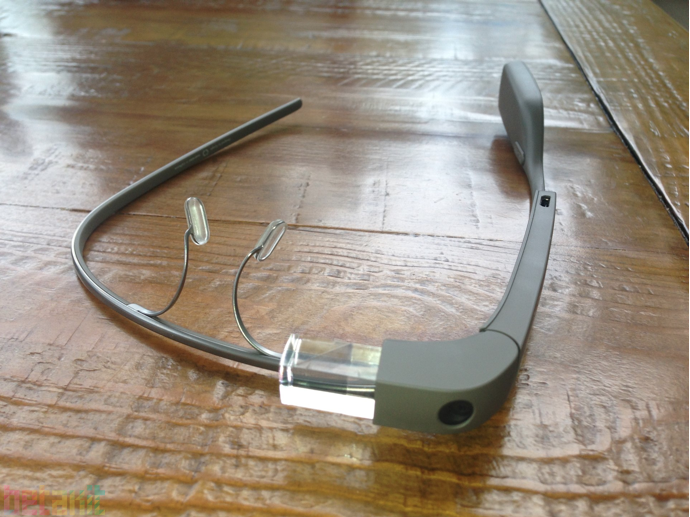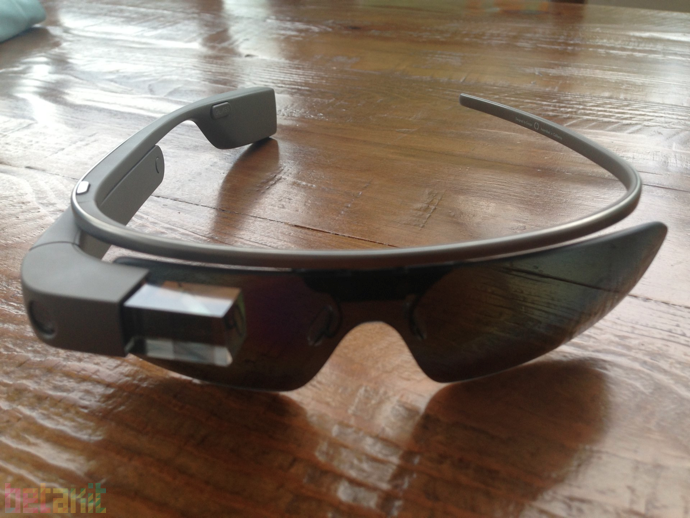Wearable technology is definitely not going anywhere. But Google Glass, as it exists today, isn’t ready to change the “face of technology”.
As one of few Canadian Glass Explorers, I have been living with Glass for about a month now. I definitely see the potential in Glass. Taking a picture hands-free from your own perspective and being able to show your friends what you are looking at when on a video call are two great examples of some of the mind-blowing features – but yet this device leaves me wanting more.
I don’t find myself waking up in the morning and grabbing my Glass in the same way I do my smartphone, Pebble Smartwatch and even my Fitbit. Glass right now is more a toy than a necessity. And thanks to one of the in-box accessories, when I am outside, Glass just becomes a very expensive attention-getting pair of sunglasses.
From my own experiences with Glass and in witnessing the reactions of people when they try Glass on for the first time, it’s very clear that Google has some work to do before Google Glass is seen walking down the street on everyone’s face. Here are ten things I believe Google needs to change to make Glass ready for primetime.
1. More Apps!
If the smartphone world has taught us anything about what is needed for a new platform to survive, it’s apps. Glass currently only has eleven official apps and about thirty-four apps in total if we count unofficial apps found in Glassware directories. Glass is in dire need of more apps and also an aggregated app store. Apps that are notification-centric and utilitarian in nature will do well on this device.
2. Image Search
Google search is obviously front and center on Glass but you can only use voice to enter search terms at this time. Google could really take Glass to the next level by leveraging the Image Search or Google Goggles features they are already offering online or on mobile. Taking a picture of something, like an animal, flower or insect, and getting related results back would be a valuable use case with many applications.
3. Improved Voice
Glass understands about 70% of what I am saying. I still find voice commands and dictation much more accurate than Apple’s Siri but there is major room for improvement here especially since voice is such a critical user interaction for this device. In addition, Glass currently picks up other voices near the device when you are performing a task that uses voice as an input. The ultimate feature for Glass would be for it to recognize your voice and to work only when you are speaking.
4. Easier Access to Contacts
Google currently lets you add contacts to Glass through your MyGlass web or smartphone app. All of these contacts must be in your Google+ circles. Right now there is no way to send an email, text or call someone who hasn’t previously been added to your contacts. Glass should have access to all your contacts either by getting them from Gmail or, better yet, using your smartphone’s address book.
5. Visual notifications
Whenever you are sent a card to your timeline (like an email, a new headline from the New York Times etc.) Glass notifies you with a friendly and short-lived chime. There have been a number of times when I have missed the notification because it’s loud where I am when I receive it, I am not paying attention to Glass or I didn’t have Glass on at the time. It would be helpful to have a badge or visual notification available on the home screen of Glass to alert users that there are new cards to view in their timeline.

6. Volume control
Listening to a call or to Glass reading a message aloud using the bone-conducting speaker is pretty impressive but there is no way to adjust the volume. When I am in a noisy environment, like walking down the street, I find myself having to close my left ear to better hear the resonating voice in my head. Glass would benefit greatly by giving users the ability to turn the audio up or down on the device.
7. Stronger Battery
Battery is a complaint for all technology right now and Glass is no exception. The battery life on Glass is only about 3-4 hours right now with the device running out of gas even sooner when you are using it extensively for taking pictures, shooting video or video calling. If Glass is meant to be an everyday all-day device, it will need to keep up with its battery life and allow for longer periods of use.
8. Better iOS Compatibility
Using Glass with Android is a dream. Using it with an iPhone right now means that I am only getting half of the functionality. Functions like text and maps, for example, only work on Android devices at this time. This most likely will change when iOS7 comes out which will give more access to Bluetooth connected devices.
9. Lower Price
At $1500 a pop, Glass is up there in the same price bracket as a new laptop or even a Smart TV. This price is going to need to come down at least a third to make it more accessible to the everyday tech enthusiast. Glass competitors expected to enter the market later this year are pricing themselves anywhere from $299 (GlassUp) to $599 (Recon Jet).
10. Cooler Look
Personally, I like the design aesthetic of Glass. It’s different than anything we have seen before and I think if we want to bring on the future we need something out there to help us get there. But the stares, glares and reactions from those that either see me wearing Glass or the reactions from those trying on a pair themselves beg to differ. Google needs to get rid of the dorky stigma it currently has in order to attract non-early adopters when they go out to market. This most likely will mean a more toned down, traditional glasses like feel which people are more used to and comfortable with.
Have you tried Google Glass? Shoot us some improvements you hope to see before Glass launches in the comments.


